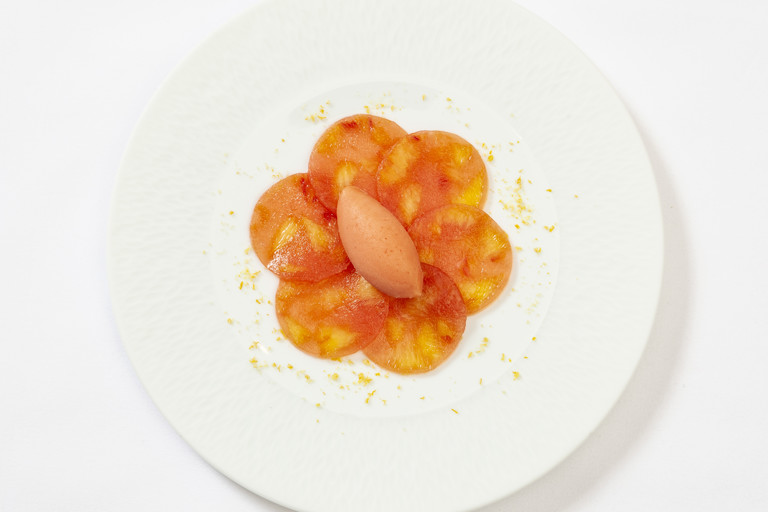Blood orange carpaccio
Blood oranges offer a sweet, colourful foil to the sometimes bleak greyness of winter, and in this recipe they're served three ways: as a sorbet, a sherbet and a delightful frozen carpaccio. Best of all, this recipe can be made entirely in advance, making it ideal for dinner parties.
'This is one of the cleanest and most refreshing desserts at Le Manoir. There are a number of varieties of blood orange, native from either Spain or Italy. The variety we use here between December and March is the Moro. The purple-red pigmentation in the blood orange adds not only colour but is also a strong antioxidant. It also transforms the flavour of the orange.
This recipe could easily be made in individual small moulds, or simply grated into a granita if you prefer.'
Follow Raymond on Instagram, Twitter and Facebook. Recipe © Raymond Blanc.
Ingredients
Metric
Imperial
Carpaccio
- 325g of blood oranges, (roughly 6-7 whole oranges), peeled and segmented
- 25ml of Campari
- 3g of stevia extract, or 30g fructose sugar
- 160ml of blood orange juice
- 5g of gelatine leaves, ideally fish gelatine, softened in cold water
Blood orange sorbet
- 200g of blood oranges, (roughly 4 whole oranges), peeled and segmented
- 200ml of blood orange juice
- 5ml of Cointreau
- 3g of stevia extract, or 30g caster sugar
- 30g of liquid glucose
Orange sherbet
- 1 blood orange, finely zested
- 30g of caster sugar
Equipment
- Stick blender
- Ice cream maker
- Terrine mould
Method
- 200g of blood oranges, (roughly 4 whole oranges), peeled and segmented
- 200ml of blood orange juice
- 5ml of Cointreau
- 3g of stevia extract, or 30g caster sugar
- 30g of liquid glucose
- 1 blood orange, finely zested
- 30g of caster sugar
- 325g of blood oranges, (roughly 6-7 whole oranges), peeled and segmented
- 25ml of Campari
- 3g of stevia extract, or 30g fructose sugar
- 120ml of blood orange juice
- 5g of gelatine leaves, ideally fish gelatine, softened in cold water
- 40ml of blood orange juice
Get in touch
Please sign in or register to send a comment to Great British Chefs.



